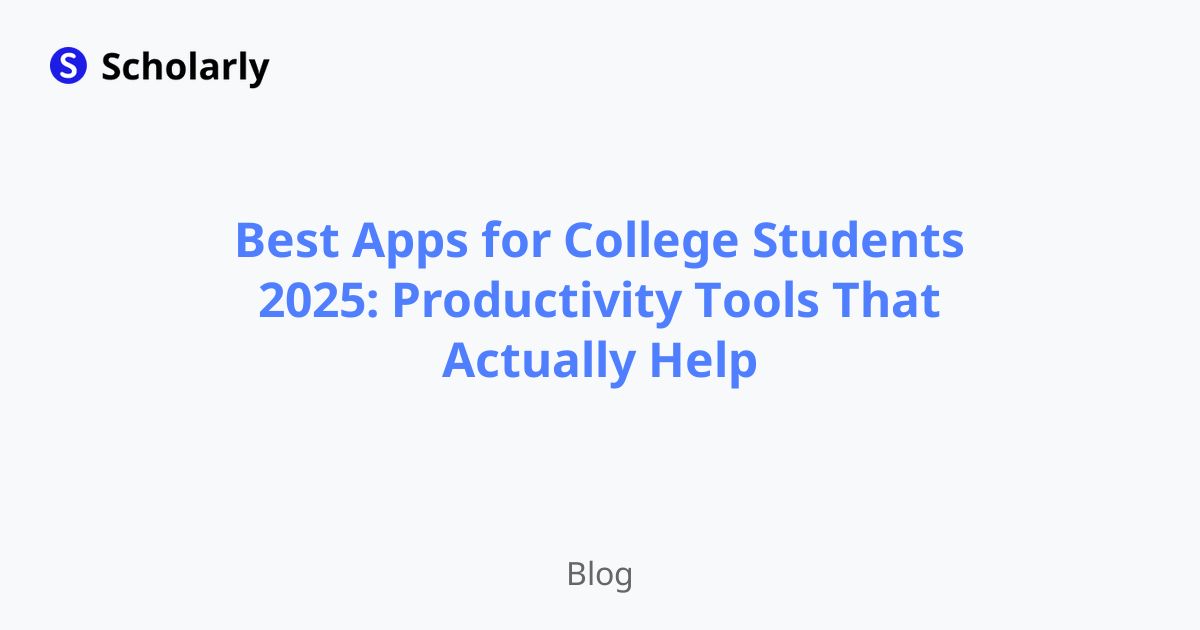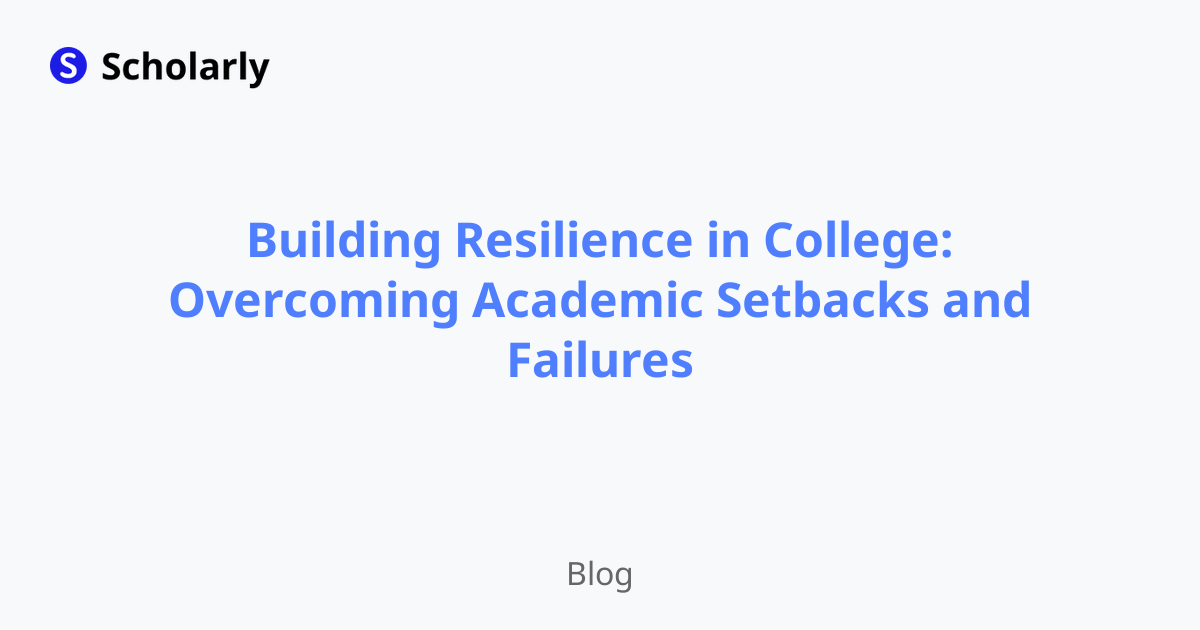Study Cards Maker: Unlock Your Learning Potential
Explore the transformative world of study cards with the 'Study Cards Maker.' This article delves into its history, benefits, significance, best practices, comparisons, AI impacts, challenges, and top online apps, empowering learners to maximize their study potential.

Introduction
In today's fast-paced educational landscape, efficient study methods are crucial for academic success. One of the most effective tools at a learner's disposal is the Study Cards Maker. This innovative tool allows students to create personalized study cards tailored to their unique learning styles and needs. In this article, we will explore the history, current state, and future of study card making, along with its numerous benefits, significance in education, best practices for maximizing its effectiveness, and a comprehensive comparison of popular tools. Additionally, we will examine the impact of artificial intelligence in this realm and highlight several online applications that can further enhance the learning experience. Let’s unlock your learning potential!
History
Past State
The concept of using cards for study dates back centuries. Historically, students relied on handwritten flashcards, often made from index cards, to memorize and review information. This method was prevalent before the advent of digital technology and online resources. In the past, students would meticulously write down definitions, formulas, or important dates on these cards, which were easy to carry and review on the go. Popular tools included physical flashcard sets and guides that helped learners structure their studies efficiently. These methods, while effective, were often time-consuming and lacked the personalization that modern learners require.
Current State
Today, the landscape of study cards has evolved significantly with the integration of digital technology. Various study card applications and online platforms now allow users to create, share, and customize their study materials. Tools such as Quizlet and Anki have become household names among students, offering functionalities that enable users to incorporate images, audio, and even collaborative features. The current state of study card making emphasizes accessibility and adaptability, allowing learners to study anytime and anywhere. AI and machine learning are also beginning to play a role in optimizing study card effectiveness, offering personalized recommendations based on individual learning habits.
Future State
Looking ahead, the future of study card making is steeped in potential. With the rapid advancement of artificial intelligence, we can expect tools that leverage machine learning algorithms to analyze a user's performance and suggest tailored study cards that enhance retention. Future applications may incorporate voice recognition technology that allows students to create cards simply by speaking. Additionally, integrations with augmented reality (AR) could usher in a new era of immersive learning experiences, where study cards could be visualized in interactive formats. AI-powered tutors are also expected to provide real-time feedback and assistance, making studying more efficient and impactful.
Benefits
Enhanced Retention
Creating study cards significantly boosts retention rates. When learners engage in the process of crafting their cards, they actively participate in their learning. This active involvement fosters better memory retention. Evidence suggests that the act of writing helps encode information in the brain. Moreover, reviewing these cards regularly reinforces knowledge, ensuring that information is retained long-term.
Flexibility and Convenience
Study cards offer remarkable flexibility and convenience. Students can take their study cards anywhere, whether they are commuting, studying at a café, or preparing for exams. Unlike bulky textbooks, study cards can easily fit into a backpack or pocket. Digital study card applications further enhance convenience, allowing users to access their materials via smartphones or tablets, making it easier to study in a variety of settings.
Customization
Every learner has unique needs and preferences. Study cards empower students to customize their study materials according to their learning styles. Users can choose colors, fonts, images, and question formats that resonate with them. This level of personalization not only makes studying more enjoyable but also ensures that students engage with the content on a deeper level, catering to visual, auditory, or kinesthetic learning preferences.
Active Recall Practice
The essence of study cards lies in the active recall practice they promote. By testing oneself with flashcards, learners stimulate their memory retrieval processes, which is proven to be one of the most effective studying techniques. This active recall method combats the forgetting curve, enhancing the likelihood of long-term retention. Regularly using study cards for self-testing ensures that learners are not just passively reading but actively engaging with the material.
Collaboration
In today's interconnected world, collaboration is key to successful learning. Study cards foster collaborative learning among peers. Students can share their study cards with classmates, allowing them to benefit from each other's knowledge and perspectives. Online platforms often feature opportunities for students to collaborate on study sets, enhancing the depth and breadth of their learning experience.
Significance
The significance of study cards extends far beyond their simple format. Historically, they have been a cornerstone of educational theory, emphasizing active learning and memory retention. The transition from handwritten cards to digital applications reflects the broader evolution of educational tools. In an era where information is abundant, the ability to distill complex concepts into digestible bite-sized pieces through study cards is crucial. The significance of study cards lies in their adaptability; they cater to diverse learning styles and can be utilized across various subjects and disciplines. As education increasingly shifts to accommodate different learners' needs, study cards will remain integral in promoting effective study habits and improving academic outcomes. Their role as an accessible and flexible study tool positions them as essential in the learning journey, symbolizing the ongoing quest for effective, personalized education.
Best Practices
Create Clear and Concise Cards
When crafting study cards, clarity is paramount. Each card should focus on a single concept or question to avoid overwhelming the learner. Use bullet points, keywords, and simple language to convey information effectively. This practice ensures that students can quickly grasp the material without unnecessary distractions.
Utilize Visual Aids
Incorporating images, diagrams, or charts on study cards can enhance comprehension and retention. Visual aids stimulate different areas of the brain and cater to visual learners. Studies show that combining text with visuals improves memory recall, making it easier for students to remember complex information.
Implement Spaced Repetition
One of the most effective study techniques is spaced repetition, which involves reviewing study cards at increasing intervals. This method combats the forgetting curve by reinforcing information over time. Utilizing apps that support spaced repetition algorithms can optimize this practice, ensuring that students review cards based on their familiarity with the content.
Collaborate with Peers
Encouraging collaboration when using study cards can provide diverse perspectives and insights. Students can form study groups where they share their cards, quiz each other, and discuss challenging concepts. This collaborative approach not only enhances understanding but also fosters a sense of community among learners.
Regularly Update Your Cards
As students progress in their studies, it's essential to update and refine study cards to reflect new knowledge. This practice keeps the material relevant and aligned with current understanding. Regularly revising cards ensures that they remain useful study tools throughout the learning journey.
Pros and Cons
Pros
- Increased Retention: Study cards promote active recall, enabling better retention of information.
- Portability: Physical or digital study cards are easy to carry, making them convenient for on-the-go studying.
- Customization: Learners can tailor their study cards to suit their individual preferences, enhancing engagement with the material.
- Collaborative Learning: Study cards facilitate collaboration among peers, fostering a supportive learning environment.
- Flexibility: Digital study cards can be used across various devices and platforms, allowing for versatile studying options.
Cons
- Time-Consuming: Creating study cards can be time-consuming, especially if students are thorough in their approach.
- Over-Reliance on Cues: Some learners may become overly reliant on study cards, neglecting comprehensive understanding of the material.
- Limited Content Scope: Study cards may not be suitable for all types of content, particularly complex subjects that require in-depth exploration.
- Distraction: Digital platforms may introduce distractions, such as notifications or ads, reducing study effectiveness.
- Potential Misinterpretation: Poorly created study cards can lead to misunderstandings or misinterpretations of content, compromising learning quality.
Comparison
Quizlet
Quizlet is one of the most popular online study tools available. It allows users to create digital flashcards and access a vast library of user-generated content. With features such as collaborative study sets, games, and quizzes, Quizlet offers an engaging learning experience. Users can customize their flashcards with images and audio, making it suitable for various subjects. Additionally, the platform supports mobile access, making it convenient for studying on the go. For more information, visit Quizlet.
Anki
Anki is renowned for its spaced repetition system, making it a favorite among medical students and language learners. The software allows users to create highly customizable flashcards and integrates advanced algorithms to optimize the learning process. Anki’s strength lies in its ability to tailor review schedules based on the learner's performance, ensuring that challenging concepts are revisited more frequently. Users can also utilize multimedia elements, such as audio and images, to enhance their study experience. Explore more about Anki at Anki.
Cram
Cram is another valuable tool for creating and studying flashcards. It features a simple interface that allows users to create cards quickly. Cram's unique feature is its ability to create flashcards that are automatically organized by categories, making it easy for users to find specific topics. The platform also includes a mobile app, enabling users to study anytime and anywhere. For additional insights, check out Cram.
Brainscape
Brainscape leverages cognitive science principles to enhance learning through its adaptive flashcard system. Users can create their flashcards and share them with the community. The platform provides a unique feature that allows learners to rate their confidence in each answer, enabling the algorithm to prioritize cards that need more attention. This personalized approach to studying makes Brainscape an effective tool for learners seeking to optimize their study time. For more details, visit Brainscape.
Scholarly
Scholarly stands out with its AI-generated flashcard creation and text completion features. Users can create pages similar to Notion pages, where they can add various components, including AI-generated study cards. Scholarly not only transcribes images and PDFs into text but also converts them into structured flashcards. The platform's ability to provide AI-powered tutoring and quizzes adds an interactive dimension to studying. Discover the potential of Scholarly by signing up at Scholarly.
Methods
Active Recall
Active recall is a powerful study method that involves testing oneself on the material rather than passively reviewing it. When using study cards, students can practice active recall by flipping the card to reveal the answer and attempting to recall the information beforehand. This method strengthens memory pathways and enhances retention. Students can incorporate this technique into their routine by using study cards for self-quizzing, ensuring they engage actively with the material.
Spaced Repetition
Spaced repetition is a method that schedules reviews of material at increasing intervals. By revisiting study cards over time, learners can combat the forgetting curve and reinforce their knowledge. This technique is particularly effective for retaining information long-term. Many digital study card applications, such as Anki, incorporate spaced repetition algorithms to automate the process, allowing students to focus on cards they struggle with more frequently.
Mind Mapping
Mind mapping is a visual organization tool that helps learners connect concepts and ideas. While study cards primarily focus on individual facts, integrating mind mapping can provide a holistic view of the material. Students can create mind maps on one side of a card and use the other side for specific details. This combination promotes deeper understanding and retention by illustrating relationships between concepts.
Study Groups
Collaborating in study groups can significantly enhance the effectiveness of study cards. By discussing and quizzing each other, students reinforce their learning while benefiting from collective knowledge. Study groups can create synergy, where members share diverse insights and perspectives, leading to a richer learning experience. Utilizing study cards in a group setting can also introduce friendly competition, making studying more engaging.
Multimedia Utilization
Incorporating multimedia elements into study cards can enhance comprehension and retention. Students can utilize videos, images, and audio clips alongside text on their cards. This technique caters to various learning styles, ensuring that visual, auditory, and kinesthetic learners can effectively engage with the material. Multimedia-enhanced study cards can create a more dynamic and interactive learning experience, making studying more enjoyable and impactful.
AI Impact
AI Applications
Artificial intelligence is rapidly transforming education, and study cards are no exception. AI applications can analyze a learner's performance, providing personalized study recommendations and optimizing the content of study cards. These applications can adapt to individual learning styles, ensuring that students receive tailored support.
AI Techniques
AI techniques such as natural language processing and machine learning algorithms are being integrated into study card platforms. These technologies allow for automated content creation, generating study cards based on user input and patterns in learning behavior. AI also enhances the user experience by providing real-time feedback and guidance during the learning process.
AI Benefits
The benefits of integrating AI into study cards are manifold. AI-powered tools can significantly reduce the time and effort required to create study materials. By automating processes, learners can focus on engaging with the content rather than administrative tasks. Additionally, AI algorithms can continuously learn from user interactions, improving the quality of study materials over time.
AI Challenges
Despite the potential advantages, integrating AI into study card tools presents challenges. One significant concern is data privacy, as users provide personal information and learning habits to these platforms. Ensuring that data is secure and used ethically is paramount. Additionally, the reliance on technology may create a gap between learners who have access to advanced tools and those who do not.
AI Online Apps
Several online applications are harnessing AI to revolutionize study card creation and utilization. Tools like Scholarly, with its AI-powered flashcard generation and text-to-speech capabilities, enable learners to engage with content dynamically. Other platforms, such as Brainscape and Anki, are implementing AI-driven algorithms that enhance the effectiveness of study methods. The integration of AI technologies is set to reshape how students interact with study materials.
Common Techniques
Flashcard Creation
The most fundamental technique in study cards is the creation of flashcards. This process involves writing a question or prompt on one side and the corresponding answer on the other. Effective flashcards are concise and focus on key concepts. To maximize effectiveness, learners should regularly revise their cards, utilizing spaced repetition techniques to reinforce knowledge retention.
Mnemonics
Incorporating mnemonics into study cards can aid memorization. Mnemonics are memory aids that help learners recall information through patterns, acronyms, or associations. By designing cards that encode complex information using mnemonic devices, students can enhance their recall and retention.
Color Coding
Color coding study cards can improve organization and facilitate learning. By assigning colors to specific topics or categories, students can quickly identify and group related information. This technique not only enhances visual appeal but also aids in memory recall by creating associations between colors and concepts.
Contextual Learning
Placing study cards within a broader context can enhance comprehension. For example, when studying vocabulary words, students can create cards that include sentences using the word in context. This technique helps learners understand the application of concepts and promotes deeper learning.
Self-Testing
Self-testing is a powerful technique that involves quizzing oneself with study cards. By regularly engaging in self-assessment, students can identify areas of weakness and focus their studying efforts more effectively. This method not only reinforces knowledge but also builds confidence in the material.
Challenges
Time Management
Creating study cards can be time-consuming, especially when students are diligent in adding details and multimedia elements. Balancing the time spent on card creation with other study responsibilities can be challenging. To mitigate this, learners should set specific time limits for card creation and focus on key concepts to maximize efficiency.
Overwhelm from Content
Students may feel overwhelmed when creating study cards for extensive subjects. The vast amount of information can lead to anxiety and hinder effective studying. To address this challenge, learners should break down content into smaller, manageable sections and prioritize key topics to focus on during study sessions.
Distraction from Digital Platforms
Digital study card applications may introduce distractions, such as notifications or ads, detracting from the study experience. Students need to be mindful of their digital environment and create focused spaces for studying. Utilizing apps with features that minimize distractions can enhance concentration.
Misalignment with Learning Styles
Not all study card methods align with every learner's style. Some students may find traditional flashcard techniques less effective, leading to frustration. To overcome this challenge, learners should explore various methods and tools, incorporating techniques that resonate with their individual preferences.
Limited Scope for Complex Subjects
Study cards are primarily effective for memorization and recall, but they may be less suitable for complex subjects that require deep understanding. Students should complement their use of study cards with other study methods, such as comprehensive readings or discussions, to ensure a well-rounded grasp of the material.
Potential Online Apps that Relate to the Topic
Anki
Anki is a leading flashcard application that utilizes spaced repetition to optimize learning. Its customizable features allow users to create visually engaging and interactive cards. Anki's algorithm adapts to individual performance, ensuring that challenging concepts are revisited more frequently. With mobile accessibility, learners can study anywhere. Check out Anki at Anki.
Quizlet
Quizlet is a versatile study tool that offers a vast library of user-generated flashcards. It incorporates gamification elements, allowing users to engage in interactive learning experiences. Quizlet's collaborative features enable students to share cards with peers, fostering teamwork. Explore Quizlet at Quizlet.
Brainscape
Brainscape leverages cognitive science principles to enhance learning through adaptable flashcard systems. Users can create personalized cards and rate their confidence in answers, allowing the algorithm to prioritize challenging material. Brainscape promotes efficient study habits through its engaging platform. Learn more at Brainscape.
Cram
Cram is a user-friendly flashcard tool that allows students to create and organize cards easily. Its unique categorization system helps learners find specific topics quickly. Cram's mobile app ensures that users can study on the go. Discover Cram at Cram.
Scholarly
Scholarly offers an innovative approach to study cards with AI-generated flashcard creation and text completion. Users can create content-rich pages, incorporating various components. The platform’s AI-powered tutoring and interactive quizzes enhance the study experience. Sign up at Scholarly to experience its features.
More Subheadings
Study Techniques for Different Learning Styles
Understanding that learners have various styles is essential for effective study. Visual learners benefit from diagrams and images, while auditory learners retain information better through listening. Kinesthetic learners thrive through hands-on experiences, making study cards particularly effective when coupled with practical activities. By recognizing individual learning preferences, educators can tailor study methods to ensure that every student can succeed.
The Role of Technology in Education
Technology has transformed the educational landscape, making learning more accessible and flexible. The integration of digital tools into study practices allows students to engage with content interactively. Online platforms that facilitate collaborative learning provide opportunities for peer-to-peer support, enhancing the overall educational experience. As technology continues to evolve, its role in education will only become more integral.
Motivation Strategies for Effective Studying
Maintaining motivation is crucial for successful studying. Setting specific, achievable goals helps students stay focused and accountable. Incorporating rewards for reaching study milestones can boost morale and create a positive study environment. Additionally, creating a structured study schedule with designated breaks fosters productivity and prevents burnout. By prioritizing motivation, learners can approach their studies with enthusiasm and determination.
Importance of Review and Reinforcement
Regular review and reinforcement of learned material are vital for long-term retention. Study cards serve as an excellent tool for this purpose, enabling learners to revisit key concepts consistently. Implementing review sessions, either independently or in collaboration with peers, reinforces knowledge and solidifies understanding. Developing a habit of reviewing study materials can significantly enhance academic performance.
Conclusion
In conclusion, the exploration of the Study Cards Maker reveals its rich history, evolving into a vital educational tool today. The benefits of using study cards, such as enhanced retention and customization, underscore their significance in modern learning. By applying best practices and understanding the pros and cons of study cards, students can maximize their study efforts effectively. The comparison of tools like Quizlet, Anki, and Scholarly highlights the diverse options available to learners seeking efficient study methods. The impact of AI on study cards promises an exciting future, offering personalized learning experiences. Common techniques such as active recall and spaced repetition further enhance study card effectiveness, while challenges like time management and content overwhelm must be navigated thoughtfully. Finally, exploring potential online apps can provide learners with the resources they need to succeed in their academic endeavors. Embracing the tools and techniques available through the Study Cards Maker can truly unlock one’s learning potential.
Try Our Popular AI Study Tools
Transform your study materials into interactive learning experiences with our most popular AI-powered tools:
PDF to Flashcards
Convert lecture notes and textbooks into study flashcards instantly
Text to Flashcards
Turn any text or notes into comprehensive flashcard sets
Image to Flashcards
Convert diagrams and handwritten notes into digital flashcards
YouTube to Flashcards
Generate flashcards from educational video content



